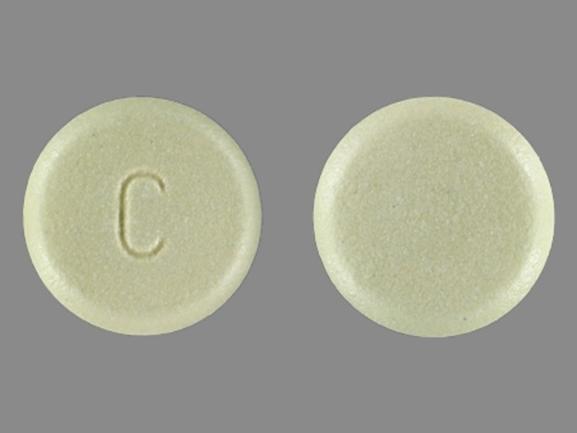Myfortic Disease Interactions
There are 6 disease interactions with Myfortic (mycophenolic acid).
Immunosuppressive agents (applies to Myfortic) infections
Major Potential Hazard, Moderate plausibility. Applicable conditions: Infection - Bacterial/Fungal/Protozoal/Viral
Serious and sometimes fatal infections have been reported in patients receiving immunosuppressive agents. Patients receiving immunosuppressants are at increased risk of developing bacterial, viral, fungal, and protozoal infections, and new or reactivated viral infections including opportunistic infections. Caution should be exercised when considering their use in patients with severe or chronic infections. It is recommended to interrupt therapy in patients who develop a new infection while undergoing treatment and to monitor these patients closely for any sign or symptom indicative of infection.
References
- (2001) "Product Information. Rapamune (sirolimus)." Wyeth-Ayerst Laboratories
- (2007) "Product Information. Soliris (eculizumab)." Alexion Pharmaceuticals Inc
- (2011) "Product Information. Nulojix (belatacept)." Bristol-Myers Squibb
- (2012) "Product Information. Aubagio (teriflunomide)." Genzyme Corporation
- (2014) "Product Information. Entyvio (vedolizumab)." Takeda Pharmaceuticals America
- (2017) "Product Information. Mycophenolic Acid (mycophenolic acid)." Apotex Corporation
- (2018) "Product Information. Gamifant (emapalumab)." Sobi Inc
- (2021) "Product Information. Lupkynis (voclosporin)." Aurinia Pharma
- (2021) "Product Information. Saphnelo (anifrolumab)." Astra-Zeneca Pharmaceuticals
Immunosuppressive agents (applies to Myfortic) PML
Major Potential Hazard, Moderate plausibility. Applicable conditions: Immunodeficiency
Immunosuppressive agents may increase the risk of progressive multifocal leukoencephalopathy (PML). Certain agents are contraindicated in patients who have or have had PML. Patients receiving chronic immunosuppressant or immunomodulatory therapy or who have systemic medical conditions resulting in significantly compromised immune system function should not be treated with these agents. Health care professionals should monitor patients for any new sign or symptom suggestive of PML. Therapy dosing should be withheld immediately and an appropriate diagnostic evaluation should be performed at the first sign or symptom suggestive of PML.
References
- (2001) "Product Information. Rapamune (sirolimus)." Wyeth-Ayerst Laboratories
- (2004) "Product Information. Tysabri (natalizumab)." Elan Pharmaceutical/Athena Neurosciences Inc
- (2007) "Product Information. Soliris (eculizumab)." Alexion Pharmaceuticals Inc
- (2011) "Product Information. Nulojix (belatacept)." Bristol-Myers Squibb
- (2012) "Product Information. Aubagio (teriflunomide)." Genzyme Corporation
- (2014) "Product Information. Entyvio (vedolizumab)." Takeda Pharmaceuticals America
- (2017) "Product Information. Mycophenolic Acid (mycophenolic acid)." Apotex Corporation
Mycophenolic acid (applies to Myfortic) HGPRT deficiency
Major Potential Hazard, Moderate plausibility. Applicable conditions: Lesch-Nyhan Syndrome, Gout
The use of mycophenolic acid should be avoided in patients with rare hereditary deficiency of hypoxanthine-guanine phosphoribosyl-transferase (HGPRT) such as Lesch-Nyhan and Kelley-Seegmiller syndromes because it may cause an exacerbation of disease symptoms.
References
- (2017) "Product Information. Mycophenolic Acid (mycophenolic acid)." Apotex Corporation
Mycophenolic acid (applies to Myfortic) vaccination
Major Potential Hazard, Moderate plausibility.
The use of live attenuated vaccines should be avoided during treatment with mycophenolic acid; examples include (but not limited to) the following: intranasal influenza, measles, mumps, rubella, oral polio, BCG, yellow fever, varicella, and TY21a typhoid vaccines.
References
- (2017) "Product Information. Mycophenolic Acid (mycophenolic acid)." Apotex Corporation
Mycophenolic acid (applies to Myfortic) GI complications
Moderate Potential Hazard, Moderate plausibility. Applicable conditions: Gastrointestinal Hemorrhage, Gastrointestinal Perforation, Esophageal Ulceration, Peptic Ulcer with Hemorrhage
The use of mycophenolic acid may cause gastrointestinal bleeding (requiring hospitalization), intestinal perforations, gastric ulcers, and duodenal ulcers. Mycophenolic acid should be administered with caution in patients with active serious digestive system disease.
References
- (2017) "Product Information. Mycophenolic Acid (mycophenolic acid)." Apotex Corporation
Mycophenolic acid (applies to Myfortic) skin cancer
Moderate Potential Hazard, Moderate plausibility. Applicable conditions: Lymphoma
The use of mycophenolic acid increases the risk of developing lymphomas and other malignancies, particularly of the skin. Patients with increased risk for skin cancer, exposure to sunlight and UV light should be limited by wearing protective clothing and using a sunscreen with a high protection factor. Care should be exercised when using mycophenolic acid in patients with these conditions.
References
- (2017) "Product Information. Mycophenolic Acid (mycophenolic acid)." Apotex Corporation
Myfortic drug interactions
There are 326 drug interactions with Myfortic (mycophenolic acid).
Myfortic alcohol/food interactions
There are 2 alcohol/food interactions with Myfortic (mycophenolic acid).
More about Myfortic (mycophenolic acid)
- Myfortic consumer information
- Check interactions
- Compare alternatives
- Pricing & coupons
- Reviews (4)
- Drug images
- Side effects
- Dosage information
- During pregnancy
- FDA approval history
- Drug class: selective immunosuppressants
- En español
Related treatment guides
Drug Interaction Classification
| Highly clinically significant. Avoid combinations; the risk of the interaction outweighs the benefit. | |
| Moderately clinically significant. Usually avoid combinations; use it only under special circumstances. | |
| Minimally clinically significant. Minimize risk; assess risk and consider an alternative drug, take steps to circumvent the interaction risk and/or institute a monitoring plan. | |
| No interaction information available. |
Further information
Always consult your healthcare provider to ensure the information displayed on this page applies to your personal circumstances.


